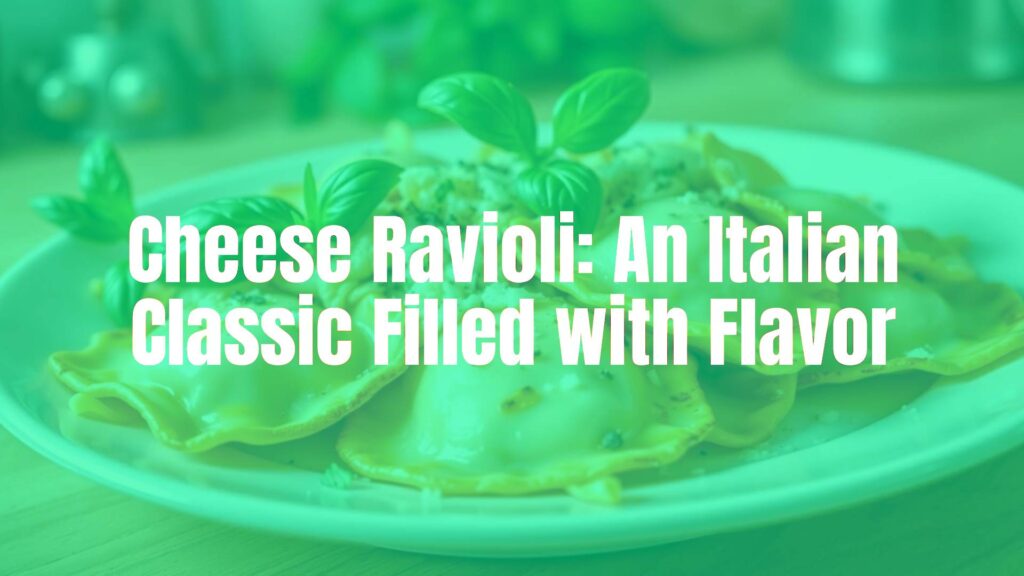Discovering Cheese Ravioli
Cheese ravioli is one of Italy’s most beloved stuffed pasta dishes, recognized for its delicate envelopes of pasta dough generously filled with a creamy cheese mixture. This dish showcases the Italian dedication to balance, simplicity, and the quality of core ingredients. With its smooth, velvety interior and tender pasta shell, cheese ravioli offers both comfort and elegance in every bite.
Origins and Historical Context
The tradition of stuffing pasta dates back to the Middle Ages in Italy, when it was a clever way to use leftover ingredients and create more robust, nourishing meals. Ravioli, in particular, has deep roots in regions such as Liguria, Tuscany, and Emilia-Romagna. Each area developed its own variation, but cheese ravioli quickly became a staple due to the widespread availability of fresh cheeses throughout the country. These pockets of flavor would appear on festive tables, especially during holidays and special gatherings.
Defining Characteristics
The hallmark of cheese ravioli lies in its filling—a blend that typically features ricotta, Parmesan, and sometimes other regional cheeses. The filling is wrapped in thin sheets of egg pasta, cut into small squares or circles and sealed before cooking. When prepared, cheese ravioli is known for its tender bite, rich, mildly tangy cheese filling, and the way it readily absorbs and complements accompanying sauces.
Key Ingredients
Traditional cheese ravioli centers around a handful of fundamental Italian ingredients:
- Ricotta Cheese: The classic base, prized for its creamy texture and delicate flavor.
- Parmigiano-Reggiano or Grana Padano: Adds umami depth and a salty, nutty note to the filling.
- Egg Pasta Dough: Made simply from flour and eggs, rolled thin to encase the cheese.
- Nutmeg and Black Pepper: A hint of spice traditionally enhances the cheese mixture.
- Salt: For seasoning both the filling and the pasta water.
Regional and Creative Variations
Although ricotta and Parmesan are the stars, local versions often incorporate different cheeses such as pecorino, mascarpone, or local fresh cheeses, reflecting the dairy specialties of each region. Spinach or herbs may be blended into the filling, offering a green, earthy twist. Some contemporary takes even add roasted garlic, lemon zest, or truffle for a modern flavor profile.
In Italy’s north, particularly in Liguria, a variant called “ravioli di magro” is filled with cheese and greens, while in other areas, the dough may be enriched with spinach for color and extra flavor.
Serving Suggestions and Pairings
Cheese ravioli is wonderfully versatile and typically served with:
- Simple Tomato Sauce: A vibrant passata or marinara highlights the cheese filling.
- Sage and Brown Butter: This classic preparation allows the nuttiness of the butter to enhance the ravioli’s creaminess.
- Cream Sauces: Light cream or béchamel-based sauces offer extra richness and are particularly popular in Northern Italy.
For an elevated meal, pair cheese ravioli with crisp white wines like Pinot Grigio or Verdicchio, or even a lightly chilled Italian rosé. A simple green salad or roasted vegetables make natural accompaniments.
Final Thoughts
Cheese ravioli isn’t just a weeknight favorite—it’s a testament to Italian culinary heritage, reflecting regional tastes and creativity through its variations. Its enduring popularity lies in its comforting flavors, textural contrast, and the nearly endless possibilities for customization, making it a cherished dish in homes and trattorias throughout Italy and beyond.

